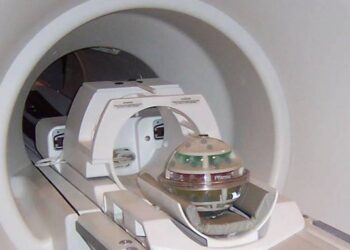Dual VA and Medicare coverage linked to glucose strip overuse
1. Veterans with diabetes mellitus are frequently given test trips for self-monitoring of blood glucose at home.
2. Veterans covered by both Medicare and the Veteran’s Administration (VA) are more likely to receive a surplus of test strips relative to what they need.
Evidence Rating Level: 2 (Good)
Study Rundown: For patients with diabetes mellitus (DM) who require insulin injections throughout the day, self-monitoring of blood glucose is essential to ensuring adequate control of the disease, as well as preventing hypoglycemia. For patients with DM who do not require insulin injections, the benefit of at-home glucose monitoring is less clear, especially in the context of high costs. Coverage by entities such as Medicare and the Veteran’s Administration (VA) is provided with the goal of limiting overuse of glucose test strips. This study hypothesized that patients with dual coverage by both Medicare and the VA were more likely to receive an excessive number of strips than patients covered by one program alone.
About 24.7% of veterans in the study received excess prescriptions for test strips. Patients with dual coverage had greater odds of overuse of test strips than those with only VA coverage. Notably the data in this study is from 2009, not reflecting recent VA or Medicare policies. Further, the study did not quantify differences such as health literacy between veterans covered by the VA, Medicare, or both, which may represent confounding variables. However, the authors provide compelling evidence that glucose test strips are overprescribed and overused among patients with dual coverage, resulting in significant health care costs.
Click to read the study, published today in JAMA Internal Medicine
Relevant Reading: Blood glucose self-monitoring in type 2 diabetes: a randomised controlled trial.
In-Depth [ retrospective cohort]: This study identified veterans with type 2 DM using ICD-9 diagnosis codes, 260,688 of which were included for study. Data was obtained from the VA and Centers for Medicare and Medicaid Services (CMS) from 2008 and 2009. Quantities of glucose test strips were identified from dispensed prescription data from the VA. Each veteran was categorized into one of four groups based on the type of diabetes medication they used: no medication, oral medications only, short-acting insulin, and long-acting insulin only. Overuse of test strips was defined as more than one strip per day if on no medications, oral medications only, or long-acting insulin only, and more than four strips a day if taking short-acting insulin.
About 24.7% of veterans received excess test strips, including 15.8% of patients receiving strips from the VA only, 53.5% from both Medicare and the VA together, and 45.7% from Medicare only. Combined coverage patients received a median of 600 test strips relative to 400 for Medicare-only patients and 200 for VA-only patients (p<0.001). Veterans who received strips from both the VA and Medicare had significantly greater odds of overuse than those from the VA only across all four of the groups (OR 16.3 for oral medications; OR 3.69 for long acting insulin only; OR 3.24 for short acting insulin), and had significantly greater odds of overuse as compared to veterans receiving strips from Medicare only.
More from this author: Increased orexin levels linked with poor sleep quality in Alzheimer Disease, Antibiotic prescription patterns in China may contribute to resistance, Glatiramer acetate (Copaxone) therapy may alter B cell function in multiple sclerosis
Image: PD
©2014 2 Minute Medicine, Inc. All rights reserved. No works may be reproduced without expressed written consent from 2 Minute Medicine, Inc. No article should be construed as medical advice and is not intended as such by the authors, editors, staff or by 2 Minute Medicine, Inc.









